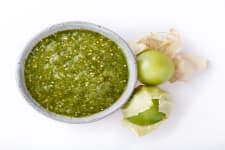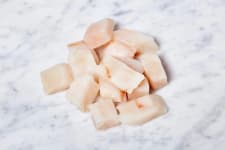There are certain dishes in the culinary stratosphere that possess a uniquely universal quality. A rare capacity to be more than one thing. To transcend the trap of belonging to any kind of genre, and as such, fly free in the world of gastronomical possibility. And if you ask me, seafood cakes are the perfect example.
Be it made with your favorite salmon species, white fish, crab or prawns, seafood can reimagine itself to you in the form of a savory, crave-worthy little cake. Here are five reasons why:
Anytime Fare
Whether you’re downright famished or just feeling a little peckish, you can always count on the seafood. For the meal-seeking individual on the hunt for real toothsome satisfaction, a pair of cakes will surely do the trick. But just as effectively, one (or even half) a cake is fine for the one who needs a quick, protein-forward bite. From maybe-a-snack to main-dish-moment, it’s really hard to argue with a well-made seafood cake.
Also, seafood cakes are as perfect for breakfast — think halibut cake Benedict — as they are for a more formal dinner moment, as I served them this summer, with a dollop of spicy aioli and a garnished with sockeye roe that my friend harvested after a fishing trip on the Kenai.
Vessels of Exploration
When I first started making seafood cakes at home, I would always use some kind of mashed potato to craft the mixture that would eventually end up on a griddle. Sometimes, I’d even pass the mash through a sieve for an even velvetier experience. These days, I’ve been inspired to get creative with the various types of tubers I might use in the mix. For example, I found packs of grated ube (purple sweet potato) and cassava in my grocery store in Homer, Alaska, both of which made for scrumptious Dungeness crab cakes.
Since it was summer, I added fresh corn kernels into my mix, but now that autumn is upon us, I might try orange sweet potatoes seasoned with allspice or nutmeg.
Clean Eating and/or Total Decadence
With that same spirit of open potentiality, seafood cakes can be made as healthily or decadently as the occasion requires. Instead of regular potatoes, for example, you might use a yam or even a root vegetable, or a kabocha squash, which I always say behaves like a potato. Or you can forego the tuber altogether and simply use eggs and perhaps a little yogurt as your binder.
In terms of cooking method, a good old skillet-fried pile of panko-crusted cakes is forever a crowd pleaser. But if you’re looking for a cleaner cake, skip the potato and the breading and oven bake or air-fry those cakes for an equally delicious experience.
Balance of Textures
The beauty of the seafood cake is that its form — whether fried or baked — lends itself to a balance of different consistencies in one perfect bite. Done right, the outer part of the cake tends to be beautifully crispy, while the inside is revealed as soft and moist, making each bite of the cake a flurry of texture that feels perfect each time.
Meal Prep Trophy Winner
Last but not least, the seafood cake is also an agent of convenience. The kind of thing you can batch-cook during the weekend and eat all week in more than one way. For breakfast on the go, as part of your packed lunch, before or after a workout, or as the main event meal. You can also make and freeze them and sleep easy knowing you always have a stash.
So, if you’re looking for a different way to love your fillet, or if you want something else in your menu rotation arsenal that can be approached in a variety of ways — from cozy comfort food to quite culinary — look no further than the seafood cake. It is, quite literally, a whole sphere of possibilities.
Live Wild!
Monica
Pictured above: The many manifestations of seafood cakes, a diversity of color, texture, and form.






